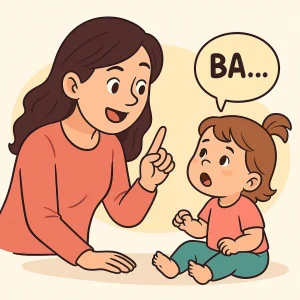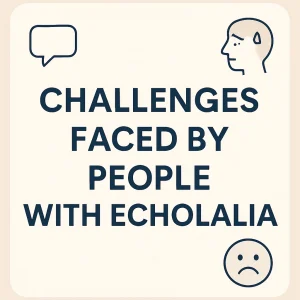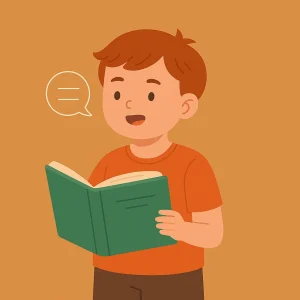Mastering Glottal Sounds in Children: A Parent’s Guide
By Rajini D
Last Updated: March 11, 2024
Glottal sounds are fundamental components of clear speech in children. These sounds are produced using the glottis, the space between the vocal cords. In English, the primary glottal sound is /h/ as in “hat.” Another notable glottal feature is the glottal stop /ʔ/, as heard in the middle of “uh-oh.” Mastery of these sounds is crucial for articulate speech and typically develops in the early years of childhood.
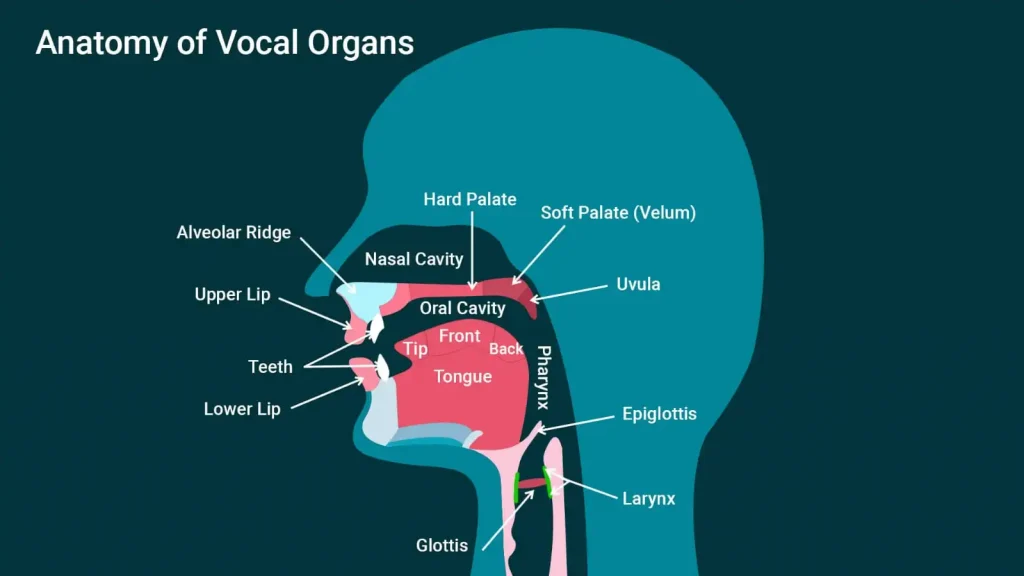
Book Free Speech Therapy Consultation.
Understanding Glottal Sounds
Defining Glottal Sounds:
Glottal sounds are made by manipulating airflow through the glottis. The /h/ sound is a voiceless glottal fricative, while the glottal stop /ʔ/ is produced by briefly stopping and releasing air through the vocal cords. These sounds are integral to speech clarity and are used in various languages.
For more information on speech and language milestones, check out our detailed guide.
Techniques for Teaching Glottal Sounds
Technique 1: Articulation Therapy Progression
Syllables to Words:
Start with simple syllables like “ha”, “he”, “hi”. Progress to more complex syllables and words, such as “hat”, “hello”, and “high”.
Words to Sentences:
After mastering individual sounds and words, combine them into short sentences to enhance speaking ability.
Also Read: Home-Based Occupational Therapy Activities.
Technique 2: Tactile and Kinesthetic Cues
Physical Cues for Each Sound:
Teach children the sensation of airflow and vocal cord positioning for /h/ and the brief interruption of airflow for the glottal stop /ʔ/.
Discover more about what to expect in speech and language development at these ages by reading about 2 to 3-year milestones and 3 to 4-year milestones.
Technique 3: Visual and Auditory Support
Visual Articulation Cards:
Use visual aids to illustrate the concept of airflow through the glottis for the /h/ sound and the mechanism of the glottal stop /ʔ/.
Auditory Repetition Exercises:
Regular practice in different contexts to reinforce learning.
If your child is on the autism spectrum and experiencing speech delays or atypical phonological processes, learn about our Speech Therapy for Autism.
Specific Practices for Each Glottal Sound
The /h/ Sound
Teaching Steps:
- Breath Control: Teach the child to exhale gently, creating the /h/ sound.
- Practice: Start with the /h/ sound, then syllables like “ha”, “he”, “hi”, and words like “hat”, “hug”, “high”.
The Glottal Stop /ʔ/
Teaching Steps:
- Airflow Interruption: Demonstrate how to briefly stop and release air through the vocal cords.
- Practice: Use examples like “uh-oh” to practice the glottal stop in a familiar context.
Learn more about Autism Spectrum Disorder and its therapies.
Advanced Practice and Word Lists
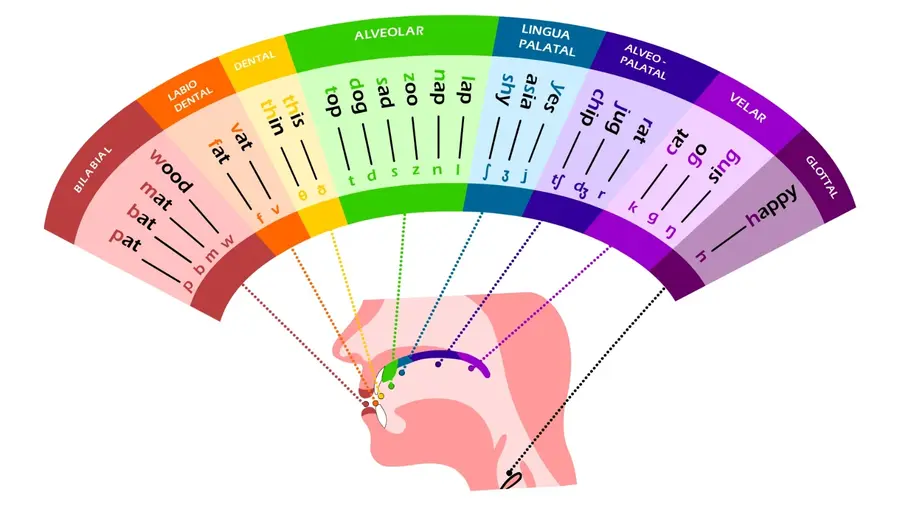
For each sound, provide word lists that practice the sound in various positions within words. Include a range of words from simple to more complex structures.
The /h/ Sound
- Syllable Combinations: Practice combining /h/ with various vowels – ha, he, hi, ho, hu.
- Drills: Practice with pairs like “hat-bat”, “he-bee”, “hike-bike” to distinguish /h/ from other sounds.
- Word List for /h/ sound: Practice /h/ sound in Initial, Final, and Medial position of a word.
Word List for /h/ sound:
/h/’ Sound in the Initial Position of a Word
CVC Words
- ‘a’ vowel: Hat, ham, hab, hack, hash, had, hank
- ‘e’ vowel: Hen, hem, hell, hent, heck, heth, hex
- ‘i’ vowel: Him, hit, hick, hill, hiss, hint, hink
- ‘o’ vowel: Hot, hon, hob, hock, hop, hoot, holl
- ‘u’ vowel: Hut, hum, hub, huff, hush, hull, hump
More Complex Syllable Structures
- CVCC: Hurst, herb, hark, honk, hump, hunt, hest
- CCVC: Hwirl, hwork, hwind, hwan, hweel, hwich, hwear
- CVVC: Heave, hoot, hue, heal, hool, hued, hoon
Additional Words
- Varied syllables: History, horizon, hospital, habit, harmony, humorous, hydraulic
‘/h/’ Sound in Medial Position of a Word
CVC Words
- ‘a’ vowel: Ahem, ahead, rehab, inhale, exhale, behemoth, ooh-ahh
- ‘e’ vowel: Beheld, adhere, rehearse, inherent, aether, behemoth, ether
- ‘i’ vowel: Behind, inhumane, withhold, exhibit, inhabit, ahi, pahi
- ‘o’ vowel: Behold, ohm, aho, inhole, exhume, ohia, ahoy
- ‘u’ vowel: Ahull, uh-huh, behung, inhumed, exhume, hula, uhura
More Complex Syllable Structures
- CVCC: Ahorse, inhand, beheld, exhale, inhaul, inhume, adhere
Additional Words
- Varied syllables: Rehydrate, inhumane, exhortation, inharmonious, behavior, rehousing, aha moment
The /h/ sound is common at the beginning of English words but is rare in the final position and less common in the medial position. The medial position examples are often found in compound words, phrases, or words with prefixes or suffixes
Explore our dedicated autism treatment centre in Hyderabad for comprehensive care.
Using Books and Everyday Activities
Select books rich in glottal sounds and integrate these sounds into daily activities. Emphasize and repeat the glottal sounds in a fun and engaging way. For example:
Book Recommendations by Sound:
| Sound | Book Title | Key Words |
|---|---|---|
| /h/ | “The Little Red Hen” | hen, happy |
| /ʔ/ | “No, David!” by David Shannon | uh-oh, David |
Conclusion
Understanding and mastering glottal sounds is essential for a child’s language development. Recognizing the typical age for mastering these sounds and identifying challenges early can lead to effective interventions. This comprehensive approach ensures a strong foundation for language skills.
Discover the benefits and features of our online speech therapy services.
Frequently Asked Questions
1. What Are Glottal Sounds in Speech Development?
Glottal sounds are produced using the glottis and include the /h/ sound and the glottal stop /ʔ/. They are essential for clear and effective speech in children.
2. At What Age Should Children Master Glottal Sounds?
Children typically begin to master glottal sounds like /h/ in their early speaking stages, with the glottal stop /ʔ/ developing as they grow older.
3. How Can Parents Help Their Children Develop Glottal Sounds?
Parents can aid their children’s development of glottal sounds through articulation exercises, physical cues for airflow and vocal cord positioning, and visual and auditory support.
4. Are There Specific Techniques to Teach Each Glottal Sound?
Yes, specific teaching techniques involve understanding the control of airflow through the glottis for /h/ and the brief stopping of airflow for the glottal stop /ʔ/.
5. What Are Some Effective Learning Resources for Glottal Sounds?
Effective resources for learning glottal sounds include visual aids, repetition exercises, and books rich in these sounds, providing engaging and practical learning experiences.
6. How to Identify and Address Challenges in Glottal Sound Development?
Regular observation of a child’s speech can help identify challenges in glottal sound development. Early consultation with a speech therapist can provide targeted support.
7. Can Everyday Activities Be Used to Practice Glottal Sounds?
Absolutely! Integrating glottal sounds into daily activities like reading, talking, and playing can make practice enjoyable and effective for children.
About the Author:
Rajini Darugupally
M.Sc., Speech-Language Pathologist (9+ years of experience)
Rajini is a passionate and dedicated Speech-Language Pathologist with over 9+ years of experience, specializing in both developmental speech and language disorders in children and rehabilitation in adults. Driven by a desire to empower each individual to find their voice, Rajini brings a wealth of experience and a warm, genuine approach to therapy.
Currently, at Wellness Hub, she thrives in a team environment that values innovation, compassion, and achieving results for their clients.
Connect with Rajini to learn more about how she can help you or your loved one find their voice.
Book your Free Consultation Today
Parent/Caregiver Info:
Client’s Details:
* Error Message
